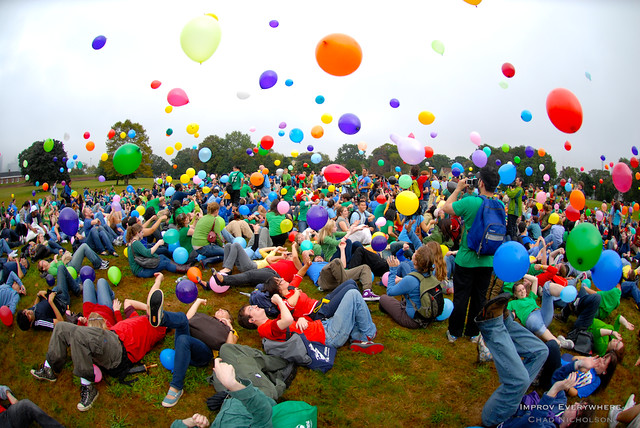During this week, our group studied the theory and complexity of mobs and crowds. We were provided with five texts, Smart Mobs: The Power of the Mobile Many by Howard Rheingold, Entr’acte by Jordan Geiger, The Real Social Life of Wireless Public Places by Anthony Townsend, Crowds and Power by Elias Canetti, and Electronic Civil Disobedience by Critical Art Ensemble. Through these various texts, we discovered a new world of crowds. It has also helped us understand and question the characteristics of crowds and mobs. The texts we were provided with focused highly on how we as humans have advanced and began to form crowds other than in the physical world.
The bare privilege to have access to the internet and to utilize our smart devices have given us all the opportunity to utilize the internet to form our own type of crowds. These new types of crowds are forming over social media, and often times over common/opposing interest/opinions. It has also allowed us to organize ourselves to create a crowd in public spaces. Which brings us to how public spaces has long been a gathering place for crowds.
Congregation happens in places like these due to the ease of access and usually it’s vastness. A few good example of how our advancing technologies has allowed us to congregate together more often is the MP3 experiment (hosted by ImprovEverywhere), the Michael Jackson flash mob (or any flash mob for that matter), the Ice Bucket Challenge, and many more others. Although some of these are not our stereotypical crowds of physical congregation, our networks has allowed those who participate in similar “crowds” to be a part of a “network crowd”.

The beauty of many of these crowds is the idea of inclusiveness. For a few, like the planned crowds, one can not simply just join the crowd and know what to do. Taking the MP3 experiment and flash mobs for example, if you are not a genuine and active participant, you, an outsider, will not and can not join these crowds. All due to the fact that you do not know the dance routine, or you do not have the MP3 file to follow along. (Even if you did, most likely you won’t get to the right time). Although, for some flash mobs, (the ones that are just spontaneous dancing), those who have high spirits have the ability to join.
Most of the time, these events take place in public spaces. Without public spaces, these activities can not happen. (Well they could but they would be small groups rather than crowds.) In the film, The Social Life of Small Urban Spaces by William Whyte, it discusses how public spaces play a huge role in human interaction and crowd formation. Designers have also went to extents though to design accordingly to prevent from crowd formations. For example, many times they would implement spikes or rocks to make a seating area uncomfortable to deter away solicitors or homeless people seekin g a place to post up. However, these public spaces have long been providing a meeting area for crowds of many kinds. They have allowed crowds to congregate and to get across what ever message they wish to get across. (A good example could be Yoko Ono’s giant peace sign for John Lennon’s birthday held in Central Park)
g a place to post up. However, these public spaces have long been providing a meeting area for crowds of many kinds. They have allowed crowds to congregate and to get across what ever message they wish to get across. (A good example could be Yoko Ono’s giant peace sign for John Lennon’s birthday held in Central Park)
